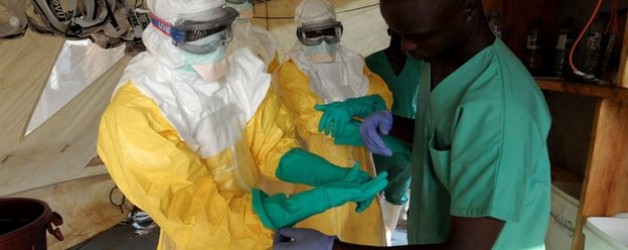“There is no doubt in my mind that we will stop it,” said Dr. Tom Frieden, director of the Centers for Disease Control.
Tuesday a patient in Dallas was confirmed to have the deadly Ebola virus. Within hours a team of investigators had arrived and was tracing the mans movements, and who had been in contact with him. The patient along with three ambulance workers have been put into quarantine. There has been no update on what will happen the people on the commercial flight he arrived in Texas with on September 20th. All have more than likely had some level of exposure.
“We have a seven-person team in Dallas today helping to review that with the family and make sure we identify everyone that could have had contact with him,” Dr. Thomas Frieden, director of the U.S. Centers for Disease Control and Prevention (CDC), told NBC in an interview.
Dallas city officials on Wednesday said the three ambulance crew members who transported the man tested negative for the virus but would remain in quarantine and would be closely monitored for the next 21 days, the amount of time it can take for symptoms to appear.
“The team on the ground will review that very intensively to see whether there’s any other groups who, out of an abundance of caution, we would want to monitor carefully,” Frieden told NBC’s “Today” show from CDC headquarters in Atlanta.
According to the CDC, the patient acquired the virus in West Africa, though they are not sure how he was infected. He was not involved in treating the Ebola outbreak in Africa.
Here are 5 things you need to know
1. Ebola is spread through fluids from the body. A cough left uncovered, a sneeze, blood or any other bodily fluids. Even knowing this the CDC says there is a near 0% chance of catching it.
2. There is no Vaccine. There is an experimental treatment, however there are no vaccines yet. There are several being tested but not ready for a clinical use yet
3. U.S. Hospitals have had some training in identifying Ebola, including when showing symptoms asking about travel history for the red flag of international travel. The CDC has also been giving guidance to flight crews, Emergency Medical Service units at airports and Customs and Border Protection officers about how to report sick travelers to the agency. The U.S. has been upping surveillance and lab testing capacity in states. The government agency has been developing tools for health departments to hold public health investigations and giving recommendations for infection control.
4. The CDC says they can stop the spread through isolation of infected patients, and possibly people they have been in contact with if needed.
5. I was on this flight should I be tested. The CDC will be contacting you but they say there is not much chance you were infected because wo hours before the start of the flight the patient did not have a fever when screened.










